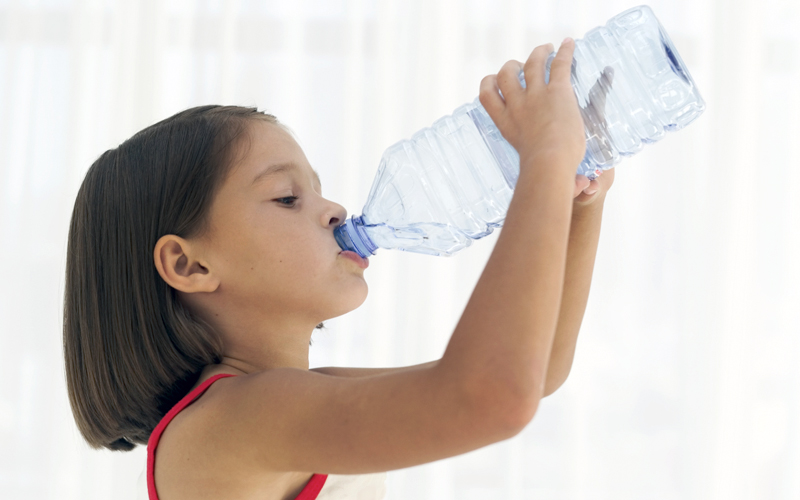
by guest blogger Deirdre Imus, author and environmental health advocate
Puberty is awkward. Everything starts to change, and you feel like a foreigner in your own body. It’s not an easy transition no matter when it happens, but for a number of girls, puberty is starting earlier than ever before—sometimes as young as 7 years old. It’s a complicated shift in a girl’s life—and not just because of the physical and emotional ramifications: Studies have shown early puberty can lead to eating disorders, depression, substance abuse, and maybe even breast cancer.
Researchers in California have been trying to discern just what is causing girls to enter into this precarious period at younger and younger ages. Some new evidence points to obesity as one possible trigger, noting that excess body fat serves as an additional source of estrogen in the body and could lead to earlier breast development. Another potential culprit is family stress: The same study found that growing up in an “unpredictable” household hastened a girl’s maturation, as did early sexual abuse and an absentee biological father.
Though we’re beginning to understand more about how the external environment affects our internal health, there remain many—too many—unknowns. We are exposed to countless toxins on a daily basis, despite our best efforts to the contrary. I eat an organic, plant-based diet and use healthy cleaning products around my home, but the second I step outside into the New York City air all bets are off. How these negative encounters impact the human body in the short and long term is a source of great interest, and even greater concern.
The factors causing young children (boys too!) to enter early puberty are multi-faceted, difficult to pinpoint, and extremely complicated. And yet, something as benign and simple as breathing indoor air might be to blame: A 2012 study by the U.S. Centers for Disease Control and Prevention linked a chemical found in common household cleaners and air fresheners to an earlier first period in girls. The reason? The products’ endocrine-disrupting chemical mimics estrogen, and messes with the delicate, developing bodies of young females.
Another possible culprit in early-onset puberty are the flame-retardant chemicals widely used in furniture production (you know, the ones that don’t actually do much to retard flames?) that permeate indoor air. Research released in 2011 found that girls with high levels of brominated flame retardants in their bodies had their first periods earlier; other research also linked prenatal exposure to flame retardants to early menstruation.
Avoiding toxic air is difficult; ditto, avoiding contaminated food, which has been implicated as another possible trigger for early puberty. Antibiotics given to sick animals make them fatter and also cause them to enter puberty earlier. When young children eat these animals, the antibiotics could similarly affect their bodies, spurring a similar outcome, researchers have theorized. It’s also unclear how eating genetically modified foods (GMOs) might be impacting our health. It’s more important than ever to know where your meat, vegetables, fruit, and grains come from and to avoid buying contaminated products.
And while water is necessary to sustain human life, be wary of its contents. Many plastic water bottles are laden with endocrine-disrupting chemicals—not just the infamous bisphenol A (BPA), but also others called maleates and fumarates that have been associated with stunted growth, early puberty, infertility, and other hormonal health concerns. In addition, widespread use of the birth control pill has led some people to worry about estrogen entering public water supplies. While the amount of estrogen in drinking water might be small, we don’t know yet how repeated, long-term intake could affect humans over time.
Protecting children from the harmful substances in our midst has been my passion for decades. Let’s shepherd these children into adulthood responsibly, and when their bodies are ready. An advertising campaign featured during the Super Bowl encouraged adolescent girls to feel confident during puberty by using the hashtag #LikeAGirl. Echoing this empowering message, we should all aim to protect our kids, our teenagers and our young adults from the dangers of chemical exposures—like a girl.
 Deirdre Imus, founder of the site devoted to environmental health, dienviro.org, is president and founder of The Deirdre Imus Environmental Health Center at Hackensack University Medical Center and cofounder/codirector of the Imus Cattle Ranch for Kids with Cancer. She is a New York Times best-selling author and a frequent contributor to FoxNewsHealth.com and Fox Business Channel.
Deirdre Imus, founder of the site devoted to environmental health, dienviro.org, is president and founder of The Deirdre Imus Environmental Health Center at Hackensack University Medical Center and cofounder/codirector of the Imus Cattle Ranch for Kids with Cancer. She is a New York Times best-selling author and a frequent contributor to FoxNewsHealth.com and Fox Business Channel.
Adapted from a previously published post.




Great article. I was verifying constantly your blog exactly what motivated! Very beneficial details especially the very last portion 🙂 We take care of similarly info considerably. I became seeking this kind of specific info for an extended time. Thank you and connected with fortune.